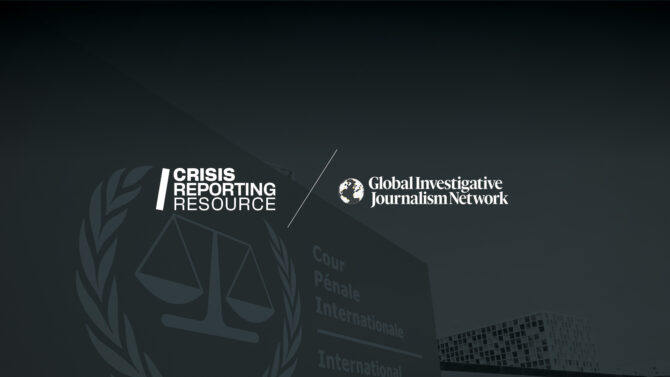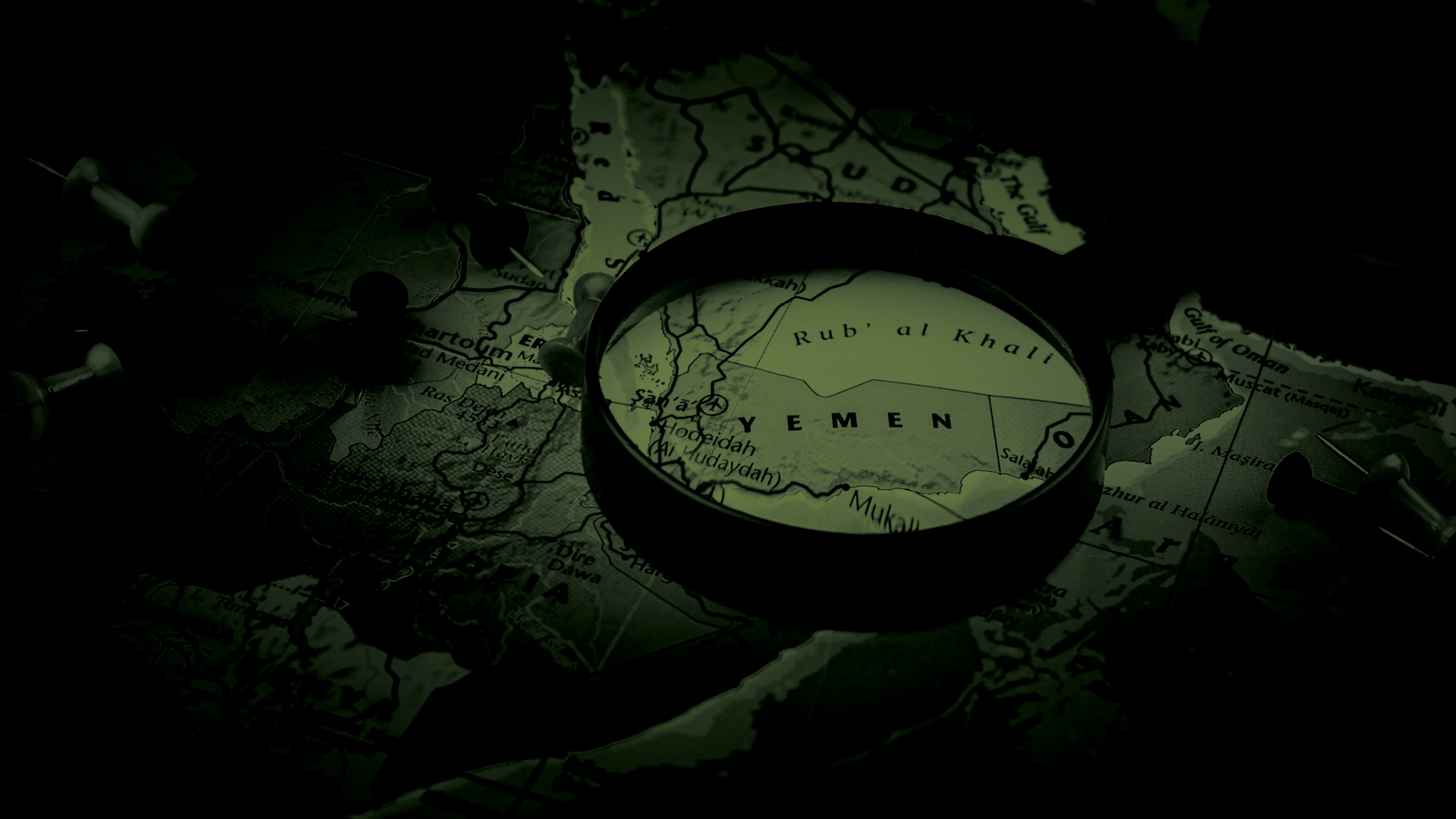A largely unnoticed incident occurred in Yemen’s Dhammar province on 2 October 2017, when an obscure religious movement Shiite shot down the most sophisticated drone in the US arsenal. The entity responsible for the strike was a militia called the Ansarallah, which attained notoriety as the Houthis by capturing most of Yemen from 2014 onwards and establishing an alliance with Iran which has resulted in their becoming one of the region’s best-equipped fighting forces. Two years later, in 2019, they repeated their drone-downing feat twice, incurring a $60m loss on the US military by felling another two MQ-9s. Last month, they shot a fourth one down over the Indian Ocean, two weeks after the Israeli army entered Gaza.
Yemen’s past record with drone warfare is a similarly unknown history. In November 2002, Yemen became only the second known theatre of drones killing humans (alongside Afghanistan), when a car carrying six suspected al-Qaeda members, including a US citizen called Kamal Derwish, was struck in Ma’rib province. The attack marked the start of Washington’s campaign of extra-judicial executions of citizens in countries it was not at war with. In 2011, it marked another first, when the US killed another of its citizens, New Mexico-born al-Qaeda suspect Anwar al-Awlaki, on its territory in the first targeted assassination (the Pentagon claimed that Derwish had been collateral damage as it was unaware of his presence in the car). Two weeks later, another drone strike killed Awlaki’s 16-year-old son. The drones were likely operated out of nearby Djibouti, from where the CIA runs a drone assassination program.
Last week, the Houthis made military history when they scored another world first by using an Anti-Ship Ballistic Missile to target a sailing vessel in open waters. Their 15 December strike achieved the high complexity of hitting a small target from a distance of several miles using a missile with an arched trajectory and with an unadjustable course following launch. The last time ballistic missiles were activated in the region was January 2020, when Iran fired two dozen at two Iraqi military bases containing US soldiers, in retribution for the US-implemented drone killing of IRGC chief Qassem Soleimani.
In Samos, on the run from Hamas

A Palestinian flees to Greece and seeks political asylum. He claims that he is being pursued by Hamas. iMEdD gained access to the case file.
“The amazing thing about this is that the Houthis have demonstrated an element of seapower without even having a boat to their name,” said Sal Mercogliano, a maritime historian and shipping industry expert. “They’ve been able to disrupt global shipping in a way we haven’t seen, except with global powers in the past.”
The missiles with which the Houthis downed the MQ-9 drones are Russian-originated SA-5, SA-6 and SA-7. With the US now launching a coalition numbering in excess of 20 nations (many anonymous due to regional tensions) to safeguard the passage of commercial ships in the Red Sea, the kind and quality of missiles possessed by the Houthis will be the defining factor in whether the US can break their blockade.
“The Houthis have received training and equipment from Iran for a decade and at the moment many of their missile technology is operated by the IRGC’s Quds brigade,” said Omid Souresrafil, an Iranian journalist and author of an upcoming book about Tehran-allied regional militias and proxies. “Iran has given them very sophisticated missile technology, including SAM and BAVAR technology, and trained them on their use.”
The US already engaged militarily with Iran in Yemen when it sought to assassinate Abdolreza Shahlaei, the IRGC’s Yemen commander, in a 3 January 2020 drone strike in Sanaa simultaneously with the strike that killed IRGC chief Qassem Soleimani in Baghdad. The attack failed to kill him but resulted in the death of a lower-ranked IRGC member, becoming the Quds brigade’s first acknowledged combat death in Yemen. On 23 December, the threat for shipping expanded as a one-way attack drone allegedly launched from Iran struck a tanker in the Indian Ocean. The situation escalated further towards a regional conflict when a top Iranian general was assassinated in Damascus by an Israeli airstrike, two days later.
All eyes on the Tihama
Yemen’s Tihama coastal plain is among the world’s remotest and most impoverished geographies. The multinationally-crewed commercial ships passing it represent two extremes of our era. Ansarallah appear at first glance to be a pre-modern militia of sandaled warriors fighting a 20-year civil war in one of the world’s poorest countries. They represent a country whose $700 annual per capita is among the world’s lowest, while the ships they shoot at cost over $100m each and carry thousands of tonnes of products to the global capitalist economy’s wealthier markets.
But Ansarallah are a very 21st century mixture of ragged rebel group and sophisticated post-national military. Their low-level fighters sport fautas, the traditional sarong worn across the Indian Ocean, shoulder AK-47s and chew qat, a mild narcotic that forms a daily Yemeni ritual. But their force also mounts nation-state-level parades and has leveraged its Iran-developed missiles and weaponized drones to challenge regional heavyweight Israel. In doing so, it became the third Arab non-state actor to militarily confront Tel Aviv, following Lebanese Hezbollah and Palestinian Hamas. What sets them apart from the other, more regionally containable conflicts, is their proximity to the geopolitical linchpin of the Mandeb Straits, which allows them to paralyse movement on the world’s most strategic trade route through which 12% of world trade passes.
Operating from locations along western Yemen’s long, arid coastline, Ansarallah have shot dozens of missiles and drones towards Israel and at about a dozen ships traversing the Red Sea since mid-October. Their campaign is in reaction to the ongoing Israeli military campaign in Gaza, which has resulted in the death of approximately 20,000 Palestinians, the vast majority civilians. The campaign began with the targeting of Israeli-owned ships, before escalating to hitting all ships conducting business with Israeli ports, although industry sources note that the targeting has been haphazard. US and French warships in the Red Sea and anti-rocket batteries in Saudi Arabia and Israel intercepted some missiles while others found their targets, resulting in a critical mass of ships diverting from Suez to head the long way round Africa. Insurance rates increased by a factor of ten, threatening to release a new wave of inflation upon western economies just concluding a coordinated, years-long tightening of interest rates to reduce the inflation triggered by the Covid pandemic. The Ansarallah hotspot on the Red Sea became the third crisis to erupt along the North-South maritime axis, rippling from the Ukraine-Russia war on the Black Sea to the Gaza conflict on the Mediterranean, and through the Suez Canal into the Red Sea.
What brought the conflict to public attention was a 19 November Ansarallah commando raid using a Yemeni military helicopter to land on an Israeli-owned, car-transporter and seize it. Over the next days and weeks, and upon Saudi request, the American warships patrolling in the area showed restraint in responding. Upping the ante, the Houthis began attacking not just Israeli-owned ships but also those making port calls in Israel. Again, the US remained unreactive, despite having moved fast to resolve a parallel Somali-related piracy incident in November, in what the Houthis interpreted as a sign of their own invulnerability.
Tensions rose further when a mysterious explosion, possibly Israeli-initiated, struck an alleged Houthi weapons depot in the Yemeni capital on 30 November. On 7 December, the United Nations Secretary General invoked Article 99 of the UN Charter. Such an exceptional intervention, without parallel since 1989 and the long Lebanese civil war, only occurs when the UN Secretary-General judges international peace and security to be under threat. On December, four of the world’s largest container carriers suspended passage through the Red Sea, as the US prepared a military coalition to fight the Houthis.
Beyond sustaining the global economy with 33,000 transits annually through the Gulf of Aden, the Red Sea’s particular fragility is down to its being enmeshed with several other theatres of Saudi-Iranian and Israeli-Iranian proxy conflict, across an explosive region vertically governed by an axis sprawling with actors: three powerful militias (Hamas, Hezbollah and the Houthis), a dozen regional states, and the entirety of the UN Security Council’s permanent members). A Red Sea navigable for all is critical to the three major actors in the current crisis: the US needs it to guarantee the flow of oil and dollar-denominated world trade; for the Russians the Red Sea must remain open so that its Black Sea ports can communicate with Far Eastern Russia; while maritime trade supplies 90% of Israel’s needs.
Hitting the Houthis
While the Houthis justify their area denial campaign by pointing to Arab state impassivity towards the unfolding humanitarian disaster in Gaza, and condition its lifting on the Israelis allowing food and medicine to enter the Strip, Washington presents its Prosperity Guardian campaign as seeking to guarantee freedom of navigation in international waterways.
“The Houthis aren’t attacking just one country, they’re really attacking the international community,” said US Air Force Major-General Pat Ryder at a Pentagon media briefing. “They are attacking the economic well-being and prosperity of nations around the world… (they are) bandits along the international highway that is the Red Sea… and need to ask themselves if they’ve bitten off more than they can chew.”
Both sides omit to mention that their deeper aim is a struggle for hegemony over some of the world’s most strategic waterways which folds into a broader Russian-Chinese challenge to US dominance. China has refused to contribute to the US-led operation any of the military vessels it stations in Djibouti, and reportedly did not respond to a call for help by a commercial ship under assault.
The operation has over 20 participants – the majority anonymous – and is intended to break the Ansarallah chokehold on the Red Sea which channels 12-15% of global trade from the Indian Ocean to the Mediterranean via the Suez Canal. It is run from the US Fifth Fleet’s Bahrain base, which belongs to the only openly participating Arab country. Egypt, Saudi Arabia and the United Arab Emirates did not join – at least openly – despite being directly affected by the trade suspension, following Ansarallah threats to strike anyone they judge as acting in support of Israel. In 2019, a combined drone-missile attack by Ansarallah on the Kingdom’s Abqaiq-Khurais oil facilities took half the Saudi oil production off the market.
But the operation was being beset by desertions even as Greece became the eleventh participating nation on 20 December by contributing an ageing but Phalanx-enabled frigate. France, Spain and Italy announced that they were refusing to operate only American command and would only pursue operations under NATO or EU orders. Australia also joined but, wary of its Chinese neighbour, without contributing a vessel.
“Wherever we used to go, we’d do so in the context of international organizations and agreements,” said Greek former general Georgios Kambas, a critic of the initiative. “That’s why we didn’t participate in Iraq. So far, this operation has not been integrated in the context of an international organization, it’s just a situation created by some willing states.”
With participation mostly limited to existing NATO members and the US not intending to either land boots on the ground in the Tihama or escort commercial ships individually or in convoy, the question arises whether the operation will manage to lower insurance premiums sufficiently as to restore passages into economically-lucrative prospects once again for ship-owners. For the time being, listed shipping companies are sitting back and seeing their shares rise, as longer travel times and fewer ships drive container rental prices up. Should the provision of an anti-missile umbrella not be enough to nudge shipping back into the Red Sea route, the resulting inflation may force the US-led operation into a potential quagmire by having to escalate, either through risking air assets over Yemen or landing troops to secure the coastal zone.
“Not enough warships, the sheer amount of traffic to protect and the complexity of the merchant-military interface are three reasons why I don’t think Prosperity Guardian will work on its own,” wrote former Royal Navy officer Tom Sharpe in the Daily Telegraph. “(The operation) is entirely defensive in nature and thus ignores the other tried and tested way of ensuring the safety of ships at sea – destroying the enemy’s ability to threaten them.”
Time is on the Ansarallah side, as victory for them involves merely being able to continue threatening shipping in the Red Sea, whereas the US-led coalition is at risk of being financially bled both by maintaining a costly presence and through shooting down missiles and drones costing a few thousand dollars with missiles valued in excess of $1m.
“The Houthis control the more strategic areas of the region’s geography, especially the Mandab Strait and Hudeida port, and they have plenty of intel from Iran as to enemy vessels’ movements” Souresrafil told iMEdD. “The US would be taking a huge risk trying to land troops and would incur severe casualties.”
But even were Operation Prosperity Guardian to deploy active bombing raids or land troops on the Yemeni shore, it is unlikely to manage to neutralise launchers all along the 330km coastal Tihama. Like Afghanistan, Yemen has already proven a graveyard for foreign armies. While the British and Ottomans made tactical withdrawals, this was not the case for the 55,000 Egyptian troops dispatched there in the 1960s by Egyptian President Gamal Abdel Nasser, or the more recent defeat of the well-funded but incompetent mixed mercenary armies of Saudi Arabia and the Emirates in the 2010s. The US will be unwilling to become involved in another Muslim country following its Iraq, Libya and Afghanistan debacles.
Investigating war crimes: What is legal in war?

This chapter by GIJN lays out a basic overview of the laws that apply in armed conflict.
Iran’s shadow wars
The escalation in the Red Sea is all the more volatile for marking an intensification in two shadow wars involving Iran. While Yemen, Iraq and Syria have become land conflicts where Tehran-affiliated Shiite militias confront the Saudi army and its militia proxies, the Red Sea has served since 2019 as an arena for a maritime shadow war fought between Israel and Iran. The Israeli navy has struck between ten and twenty Iranian ships suspected of carrying oil and weapons to Tehran allies in Syria, Yemen and Sudan, while Iran may be responsible for at least three attacks on Israeli vessels.
On land, the confrontation between Tel Aviv and Tehran has raged since the mid-2000s, extending even into the realm of psychological warfare through animated videos depicting the assassination of Israeli Prime Minister Benyamin Netanyahu. Seeking to obstruct Iran’s strategic reach and disrupt its nuclear program, Israel has tried both covert operations like assassinating and abducting Iranian nuclear scientists, infecting Iranian computers with a sophisticated virus, bombing affiliated militias and weapons shipments in Lebanon, Syria, and Sudan, and sabotaging a suspected Iranian intelligence ship in the Red Sea. Iran stands accused of seeking to kill Israelis abroad, while militias affiliated with the Islamic Republic have struck Israel with Tehran-supplied missiles and weapons.
It is a secret war which extends from the flatlands of Iraq to Syria’s shattered cities, Lebanon and Gaza’s underground military tunnels and Yemen’s misty mountains. It has had the effect of bringing Tel Aviv and Riyadh – who have pursued long-running, separate confrontations with Iran – closer. With Iran already dominating one of the world’s most sensitive crossings, the Straits of Hormuz, it can block Saudi oil exports from its oil-producing eastern side. By cultivating the Houthis, who control the Straits of Mandeb, Iran is now able to outflank its Saudi rival from the West, while killing Israel’s Red Sea trade. The strategy also buttons into the deeper US competition with China and Russia over international trading routes.
“Israel was seeking to make Haifa port an international hub and a re-export port for Europe,” said Karim Shami, a Yemeni analyst. “What Yemen has done not only affected Israel in the short term, but if you’re a big investor like China, now you won’t think to invest in ports like Eilat.”
The US strategy of shooting Ansarallah missiles and drones down but not attacking them on land has frustrated Israel. A Biden administration official confessed that they are “way more comfortable using force against Iranian proxies in Iraq and Syria than Yemen”. American (and Saudi) reticence to challenge the Houthis (despite the US having bombed their radar installations in 2016), related to the group’s astonishing 2019 combined missile-drone strike on Saudi Arabia’s largest oil processing plant, which established deterrence by eliminating 5% of daily global energy needs and bringing the Saudis to the negotiating table. By denying the Red Sea to Israeli trade, the Houthis’ Tehran patron appeared to win this round of a complex proxy conflict. It also revealed the limitations of US support to its closest allies whenever its primary national interest – hegemony through the perpetuation of dollar-denominated international trade – is affected.
Conclusion
Ansarallah and Iran struck Israel, its Arab allies and US patron on purely business terms. By disrupting international trade, they quantified Palestinian suffering in terms that might spur action where appeals to emotion and humanism failed. Their strikes closed down Israeli ports, denied Egypt its $9bn annual Suez Canal receipts, stopped normalization between Israel, Saudi and the UAE, and threatened US dollar-denominated global trade. At the same time, the greatest beneficiary of the Red Sea shutdown is Iran’s brand-new International North–South Transport Corridor, which bypasses the Suez Canal to connect Mumbai to Moscow via Iran and the Caspian Sea, shaving two weeks off the conventional trip. With Iranian rail networks extending available destinations to Turkey, East and North Europe and Central Asia, the new route could soon see an uptake in new customers unwilling to circumnavigate Africa.
